To peer inside the windows of one of the nineteenth-century townhomes across major metropolitan areas in the US would reveal romantic restorations that speak to the city’s culture. But living in the space is a different experience. Challenges with energy efficiency and noise combat with the historic guidelines that strive to keep the charm and narrative of these spaces. This battle has intensified as cities, and noise, have grown. We will review some problem areas for historic townhomes and apartments and how to make the space more livable while maintaining the charms that draw you there.
With tall windows and grand proportions, townhouses promise historic delights inside.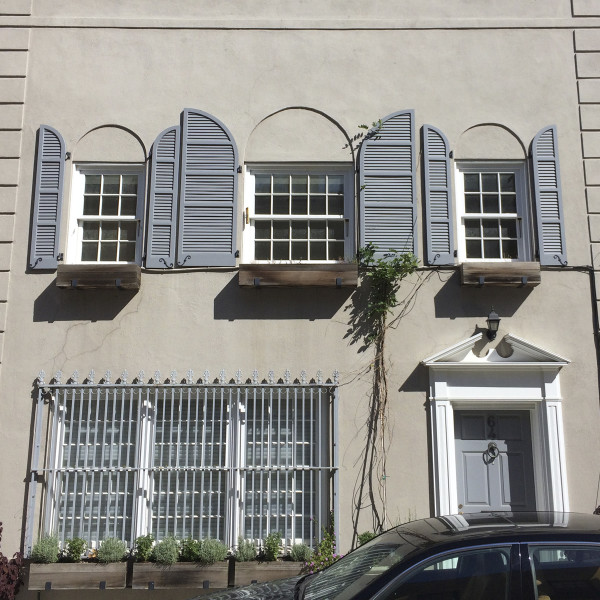
“When I do find a house I like, with nice proportions, too often it’s had the soul renovated out of it.” Julian Moore, Actress, architecture buff, and townhouse owner.
So how do you avoid removing the soul of a building while adding modern amenities?
Find Your Comfort Zones
Find where you spend the most time in the home, your “comfort zones”. When you first move in, you may assume you’ll spend most of your time in the library, but end up reading next to the windows in the living room. Only once you observe your house, how it flows, and how you live in it will you know where adjustments need to be made.
In Charleston, this upgraded townhouse living room sits comfortably over a busy street in a historic neighborhood.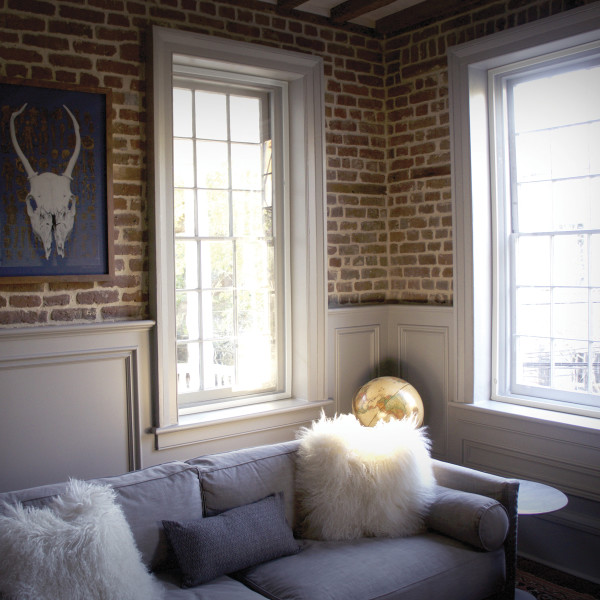
Learn the home’s history. Find nooks and crannies you can use to your advantage. Previous owners and neighbors can help in this process, especially with townhouses. Their property might have a similar history and structure to yous. Search public records and archives, visit the local building department to gather information about your townhome.
Consider the aspects of vertical living unique to a townhouse that modern amenities can fix. Do you want to add an extra bathroom? Central vacuum? These can require major construction, but knowing the ins and outs of your townhouse will make it easier to maintain its architectural history while completing.
Protect Townhouses from Noise
Older buildings weren’t built for the noise of today. Modern noise levels reach 95 dBa which could only have been dreamt of when older townhomes and apartments were designed and built.
If you’re living in a historic townhouse, you want to amend your space to make it suit your needs while keeping it as historically accurate as possible. Painting and upgrading your windows are luxuries for those with newer homes who don’t care about preservation. Well, there are ways you can get a more soundproof townhouse without permanently altering it and enjoy a huge return in comfort.
Add soundproofing window inserts to your historic windows to damp noise. Modern window inserts reduce outside noise by up to 70% and will not alter your original windows in any way. They are imperceptible from the outside of your home and are barely noticeable from inside.
Custom storm windows blend into window frames to maintain a historic look while blocking outside noise.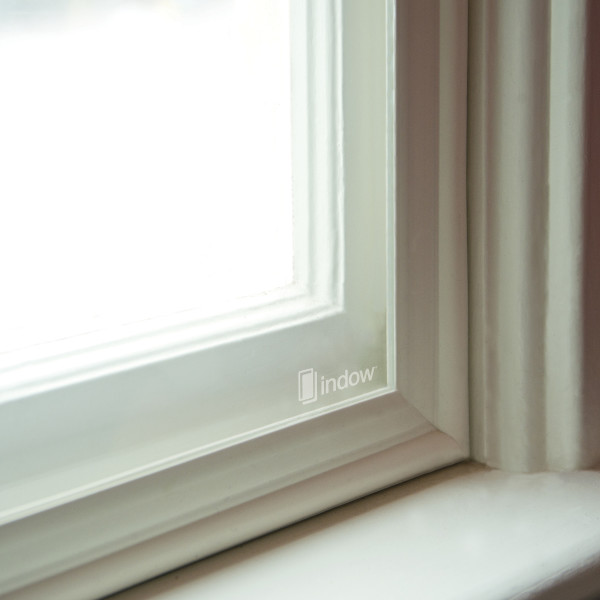
Sound absorption can be achieved by decorative rugs or tapestries. Townhouses are tall, so any noise that does get in is going to echo and amplify the noise. A rug will not only be a nice historically appropriate accent, but will cushion the sound from nearby neighbors and streets.
Protect Your Own Privacy
As anyone living in a historic townhouse knows, each person living there gets extra privacy from the other residents. Often, everyone gets their own floor in these vertical living spaces. But, with their large, tall windows, creating privacy from outside observation is a different thing entirely.
The tall windows of town homes can leave you exposed. Protect your privacy by frosting windows or adding privacy window inserts.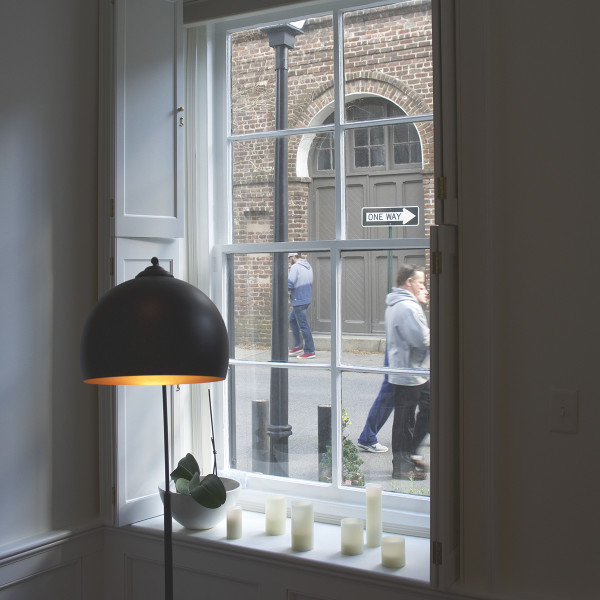
There are window coverings that are historically accurate. These include: interior shutter (1600s), bifold shutters (1830-40s), Venitian blind (1760s), roll up blinds (1812). Interior shutters and roll up blinds were popular through 1880. You can also frost your windows or add privacy window inserts. Both of these options obscure what’s happening from the outside while letting light into your home. (Test a section of window before frosting all historic windows to ensure they won’t be damaged.)
Add History to Modern Materials
When it comes down to it, adding modern amenities requires some historical sacrifices. If you simply must install a modern appliance, or widen a room, you can add the markings of history to modern additions to match its surroundings.
If the need comes to tear down a wall, or to make a hole, you can create replacement pilasters and entablatures made from cement plaster. Most of these original embellishments will come with years and layers of paint. If you want to add your own, go ahead. Document as you go. Future owners, or you yourself, may want to fully restore the original layout one day and documentation of changes is always appreciated.
A perfect balance of old and new, this townhouse owner added historic flair to modern amenities.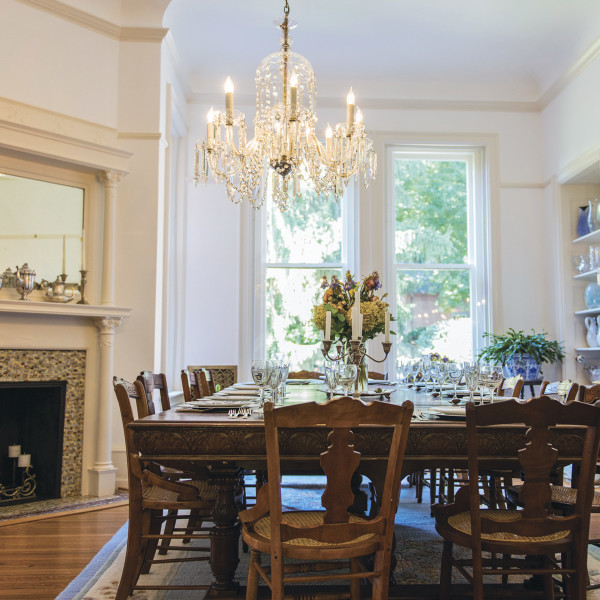
Find salvaged materials to add to modern appliances and household goods. The added accent of architectural artifacts brings cohesion to the historic townhouse and a balance between the old and the new.
Similarly, use patinas and stains to match modern elements with the historic look surrounding it. If you are extending a room and need to add wood flooring, use potassium dichromate to dye (always use caution when dyeing, wear protective gear, use in a ventilated area). If you add new hardware to existing furniture or windows, use products The Patinator to rapidly produce a patina so they will have an aged look while providing new functionality.
Create Efficiency Within Historic Environment
Some historic townhomes have a shaft that runs down the interior that houses plumbing or electricity. Find if yours does. If so, you have many options for modern, energy efficient heating and cooling systems, which can be housed there as well. Clever architects and interior designers will find areas like this in your home to add amenities without disrupting or damaging important historic framework or facades. Consulting with one before you make changes is never a bad move.
The Unico small duct high-velocity air conditioning system is small and flexible, so will fit where others cannot. It’s also practically invisible. They help create energy efficient homes by delivering a uniform temperature without drafts. You can save money on energy with a nearly hidden system.
Installing insulating window inserts help keep conditioned air (both cool and heated) inside to save money year-round. If you find yourself sitting next to tall windows and feeling cold drafts, instead of installing replacement windows that won’t match your historic home’s appearance, or spending a lot more on replicating historic windows, add inserts. Insulating drafty windows with inserts saves an average of 20% on energy bills.
Present Meets a Livable Past
The nooks and crannies of historic townhouses are perfect display areas for heritage pieces.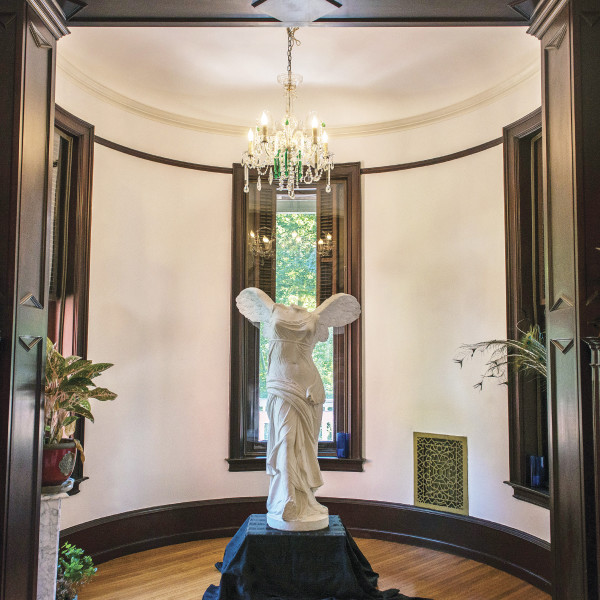
As Ingred Abramovitch says in Restoring A House In The City, “Just as these historic townhouses have been adapted for the present, their owners have learned to savor the pleasures of the past.”
Once you have these modern amenities established, those peering into your windows* won’t just see the cultural heritage from yesteryear. They will see the attitude of care and upkeep present in every preservationist’s heart. To truly blend the old with the new, to create comfort in a relic, is ensuring history will last because you’ve made it livable.
*But, hopefully no one can peer into your windows because you’ve made them private.







